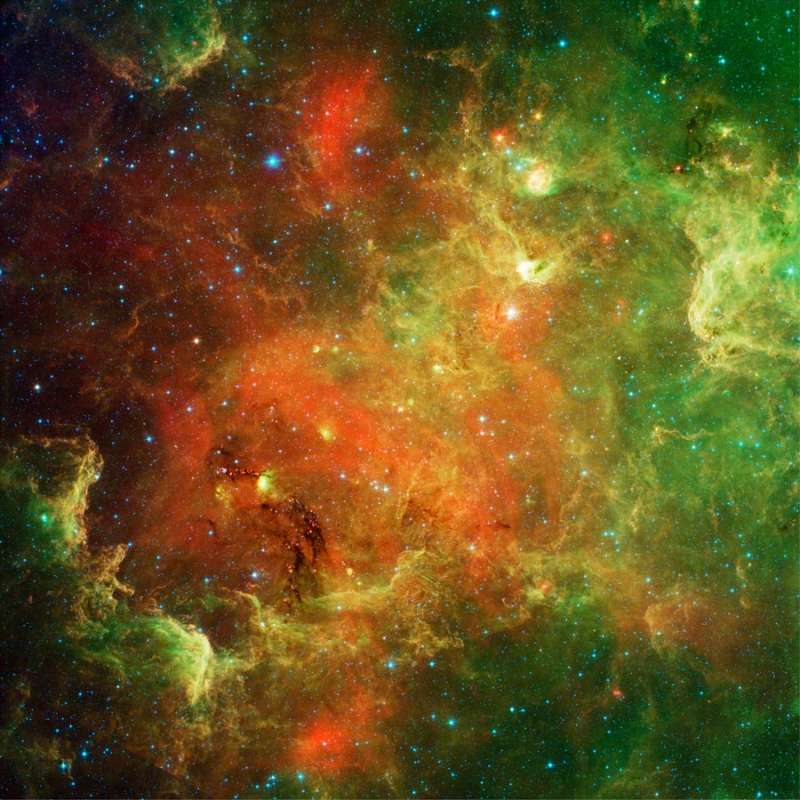 |
Астронет: Астрономическая картинка дня Туманность Северная Америка в инфракрасном свете http://variable-stars.ru/db/msg/1249803/eng |
Credit & Copyright: NASA,
JPL-Caltech,
L. Rebull
(SSC, Caltech);
Optical Rollover:
DSS, D. De Martin
Explanation:
The North America Nebula can do what most North Americans cannot -- form stars.
Precisely where in
the nebula these stars are forming has been mostly obscured by some of the nebula's
thick dust that is opaque to visible light.
However, a
new
view of the
North America Nebula
in infrared light by the orbiting
Spitzer Space Telescope has
peered through much
of the dust and uncovered thousands of newly formed stars.
Rolling your cursor over the
above
scientifically-colored infrared image will bring up a
corresponding optical image of the same region for
comparison.
The
new infrared image
neatly captures young stars in many stages of formation, from being imbedded in dense
knots of gas and dust, to being surrounded by
disks and emitted
jets, to being
clear of their birth cocoons.
The North America Nebula
(NGC 7000)
spans about 50
light years and lies about 1,500 light years away toward the
constellation of the Swan
(Cygnus).
Still, of all the stars known in the North America Nebula, which massive stars emit
the energetic light that gives the ionized
red glow is still
debated.
Authors & editors:
Robert Nemiroff
(MTU) &
Jerry Bonnell
(USRA)
NASA Web Site Statements, Warnings,
and Disclaimers
NASA Official: Jay Norris.
Specific
rights apply.
A service of:
LHEA at
NASA /
GSFC
& Michigan Tech. U.
